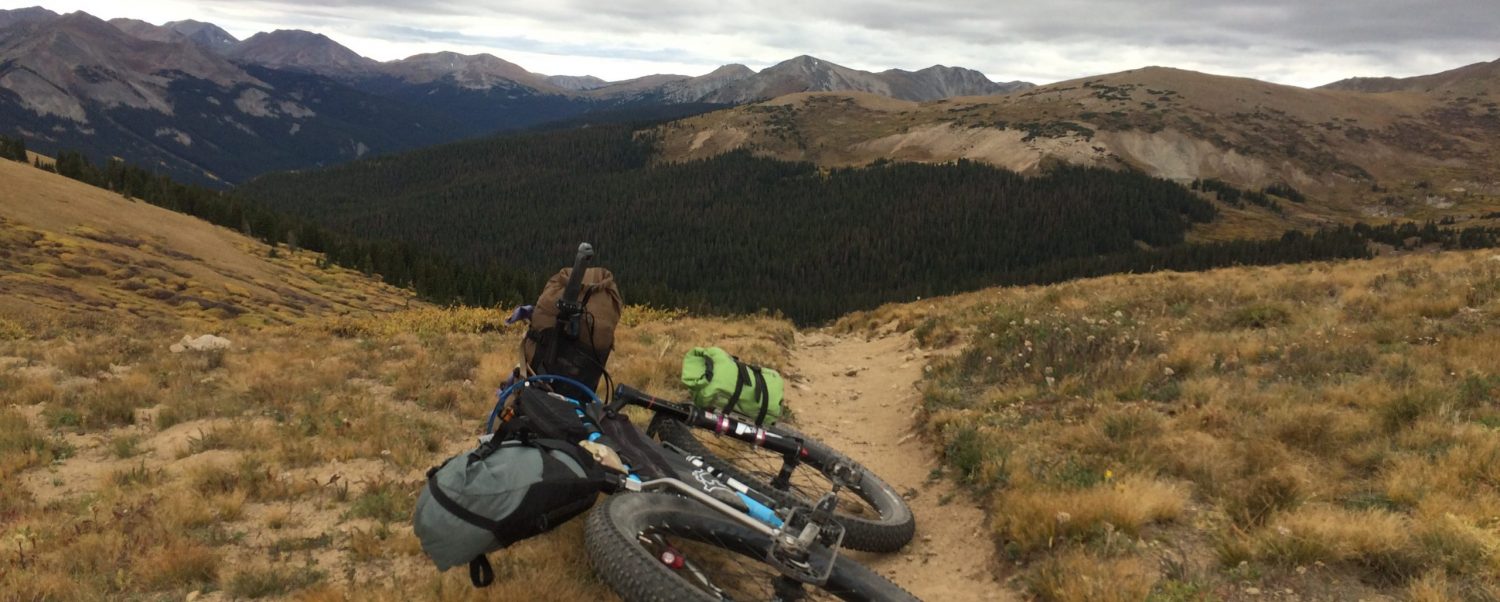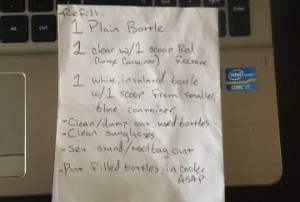Last night on Just Riding Along, I covered a good bit of this, so if you’re a listener, you can probably skip this post. I figured as a follow-up to the story of my race, I’d go through a few specific things that, if you’re interested in racing Kanza or something like it, will help you out.
#1- What’s the start like? The start of Dirty Kanza is fast. If you have any hopes of being competitive (or if you just want the first 50 miles of the course to happen faster for less effort), you need to know how to draft. Not only should you know how to, but you should be comfortable with it. Practice- motorpace, ride with an experienced group of roadies, etc. Just get very familiar with it, because (as you’ll find when you are practicing), you can move down the road behind a large group at 20mph for very little effort compared to if you’re riding alone or taking turns with one other person… especially if there’s wind involved.
#2- Which bike should I ride? All I have is bike X- do I need a “gravel grinder” bike? The “right” bike for DK exists on a continuum. Barry Wicks was on a road bike with large, tough slicks. I rode my Cysco hardtail MTB set up rigid with a fast rolling 2.0 mountain tire with some sidewall protection. Either of those bikes along with any bike that falls within that range can be competitive. Go with what you’re most comfortable riding for more than 11 hours at a time over rolling terrain that includes both smooth gravel and incredibly chunky, rough gravel. If you are comfortable with clip-on aero bars, I don’t think that they’re a bad idea, though definitely not a necessity.
#3- What tires should I use? Use something that’s got some sidewall/puncture protection that’s at last as big as what’s on Barry’s Bike, but no bigger than what’s on my bike (a 2.0 mountain tire). This is universal to all gravel racing… not just DK. When you’re racing on a surface that’s made out of rocks, there are lots of things out there to cut your tire open. The reason why you hear SO MUCH about how “sharp” the flint rock is at Kanza is likely more due to the 1200 people on course riding anywhere from 20 to 200 miles… lots of tires are riding lots of miles, so of course you’re going to hear about the destructive powers of that particular breed of gravel versus, say, the gravel around the Ouachitas in Arkansas, which is equally as vast and sharp. Tire tread isn’t all that important out there, so skimping on that to save weight/rolling resistance isn’t going to hurt much. As far as width goes, just remember that the skinnier tires may be lighter, but they’re also going to slow down more on anything that’s not Cadillac hardpack. Wider tires are, of course, heavier, but they let you maintain momentum and speed when you roll over a rough surface. They also give you the most comfortable ride, and, in all-day racing situations, comfort is speed.
#4- I heard the gravel out there rips everyone’s tires to shreds. How can I avoid flats? Three words… PICK. A. LINE. Also universal to riding all gravel, but something that the terrain at Kanza begs for- Because of the roller-coaster-y nature of the Flint Hills, a lot of riders get tempted to bomb down one hill in order to zoom partially up the next. If there’s loose/deep/wet gravel at the bottom, doing that is a good way to get a flat. If you’re at the top of one roller, and you see a flat tire party on the next hill, then use your brakes and find the best line through the bottom. Do what you can to avoid plowing full speed through deep/gnarly spots, and your flat tire chances will be greatly reduced. Go tubeless if you can, and take two tubes, boots, a patch kit, and a nice frame pump, regardless. That teeny little lightweight pump that fits in your pocket is only cool until you’re on the side of the road, exposed to full sun, in the middle of a cow pasture, being buzzed by 50 horseflies whilst pumping it like a madman just to get enough pressure to make it out alive. CO2 is ok, but remember… you never run out of pump.
#5- What should I do to my bike to prep for the race? It’s dusty out there. I can’t tell you how many people I heard with dry chains. I also saw people trying to apply lube over dust at checkpoints, which is slightly less bad than dry, but still pretty terrible because of the amount of dust/grit that you’re attracting into the chain with fresh lube. Clean, degrease, and fully dry your drivetrain before applying a coat of ProGold Xtreme lube. Do this well in advance so that the solvent in the lube has time to evaporate and attract less dirt. That’s what I did, and it lasted all the way through both my 1.5 hour preride and the entire 13.5 hours of racing. If I didn’t need to wash my bike so badly, I’d leave the same coat on and see just how long it’d last, because it’s still dead-silent. It should go without saying, but everything needs to be in good working order before you start. While you’re at it, check your bottle cage bolts and top off that tubeless sealant in your tires.
#6- Hydration Pack? Bottles? That depends on a few things- How fast are you going? How much water do you need to ride the ~50 miles between checkpoints? With the exception of the first 50 (when it temps were in the upper 60s and the sun wasn’t fully out yet), I drank 4 bottles of water or more every 3.25 or so hours (as I mentioned in my report- I stopped and filled up at a cold hose around mile 180). I likely would have run dry by about 195 if I hadn’t. That wouldn’t be a day-ender, but those last 5 miles would have sucked a little more.
My advice is to figure out how much water you, personally, need to drink, per hour, when the temps are 70-90 degrees and you’re pedaling at whatever is “your” race pace intensity. You should also know, through your extensive training, about how long it takes you to ride 50 miles over rolling terrain. Extrapolate your water volume needs based on those things, then figure out how you’re going to carry it all between checkpoints. Between 3 bottle cage spots on my bike and a J.Paks RukSak, I didn’t need a hydration pack or a back-pocket bottle. Not carrying anything on your back is more comfortable than having the heat/weight back there, but carrying a pack if you need it is better than being dehydrated.
Also, on the topic of hydration, if you want to have the best chance of success, avoid alcohol for at least the day before the race, if not two days. Start taking in extra sodium and water the day/morning before. Don’t whine to me about this- you’re likely paying a lot of money, taking time off work, taking a crew person’s time, training your ass off, etc. Have some damned respect for all that and don’t drink a fucking beer at dinner. When you’re talking about your body’s preparedness to ride 11-18 hours, then yes, it definitely matters.
#7- What should I eat? Just like with water, figure out what you need to fuel 50 miles at a time during your training rides, and extrapolate. Personally, I can’t hold everything I want/may want in the teeny pockets of my jersey. Also, I like to carry more than what I think I need. So, I use a J.Paks SnakPak, and it’s like having an all-I-can-eat buffet on my bike. The easier it is to get to your food, the more likely you are to eat often. My approximate food/drink tally was 10 Gu Roctane Gels, 1 Gu salted caramel gel, 1 Clif Turbo Shot gel, 3 packs of Gu Chomps, 3 medium size Redbulls, 2 snickers bars, 3 Bonk Breaker Bites, 1 handful of cheetos, 4 bottles of 1/2 strength Gu Brew Blueberry-Pom flavor (contains extra salt), 7 bottles of 1/2 strength Gu Roctane drink, 5(ish) bottles of plain water (doesn’t include late-race hose refill or the bottled water out of the cooler at aid stations).
#8- What should I do about course navigation? My Garmin 705 worked wonders, but it only lasts about 14 hours. I knew that there was a slight chance of it dying, so I went to OfficeMax and had the course maps/cue sheets printed & laminated so that they’d be waterproof. Don’t plan on course markings, because there aren’t that many, and they’re all move-able. The laminated (to make it waterproof) map/cue sheet combo is worth having. It only cost about $8 to have it done- I had two laminated sheets, each side printed with the map on half the page and the cue sheet on the other.
#9- Who can be my Crew Person? It’s very likely that your crew person is going to be a non-cycling friend or family member. Be sure that person knows exactly what you’re going to need at each checkpoint. I showed my dad how to fill bottles, unfold the workstand, printed off a crew map, and made a list for him.
So, everything turned out really well because of that preparation and his hard work. Don’t ask someone to crew if they’re lazy, whiny, or were standing around with a thimble when the good lord was handing out brains. If that eliminates all of your friends/family, the Dirty Kanza team offers a “support crew for hire” program. It costs money, but it looks like they do a great job, and the proceeds go to a great cause.
#10- HTFU. The answer to most of these questions lies in long, hard days of training.


Andrea,
Congratulations on a great finish. Your comments about food/hydration were spot on. It was a tough day, but an amazing race.
GREAT, GREAT points! What an awesome day we had! Congratulations!